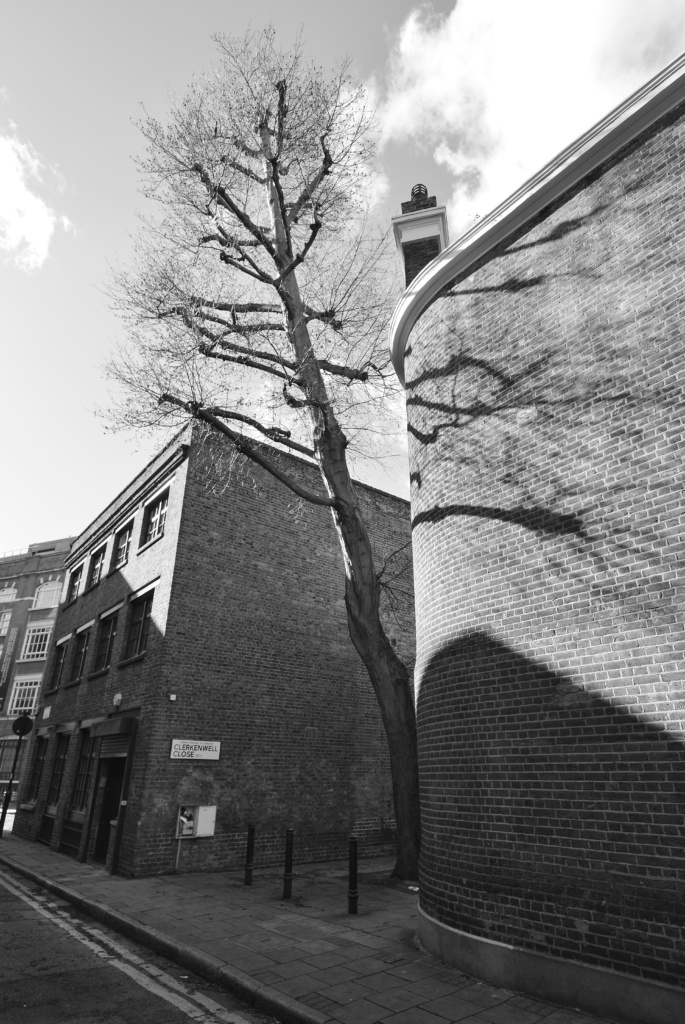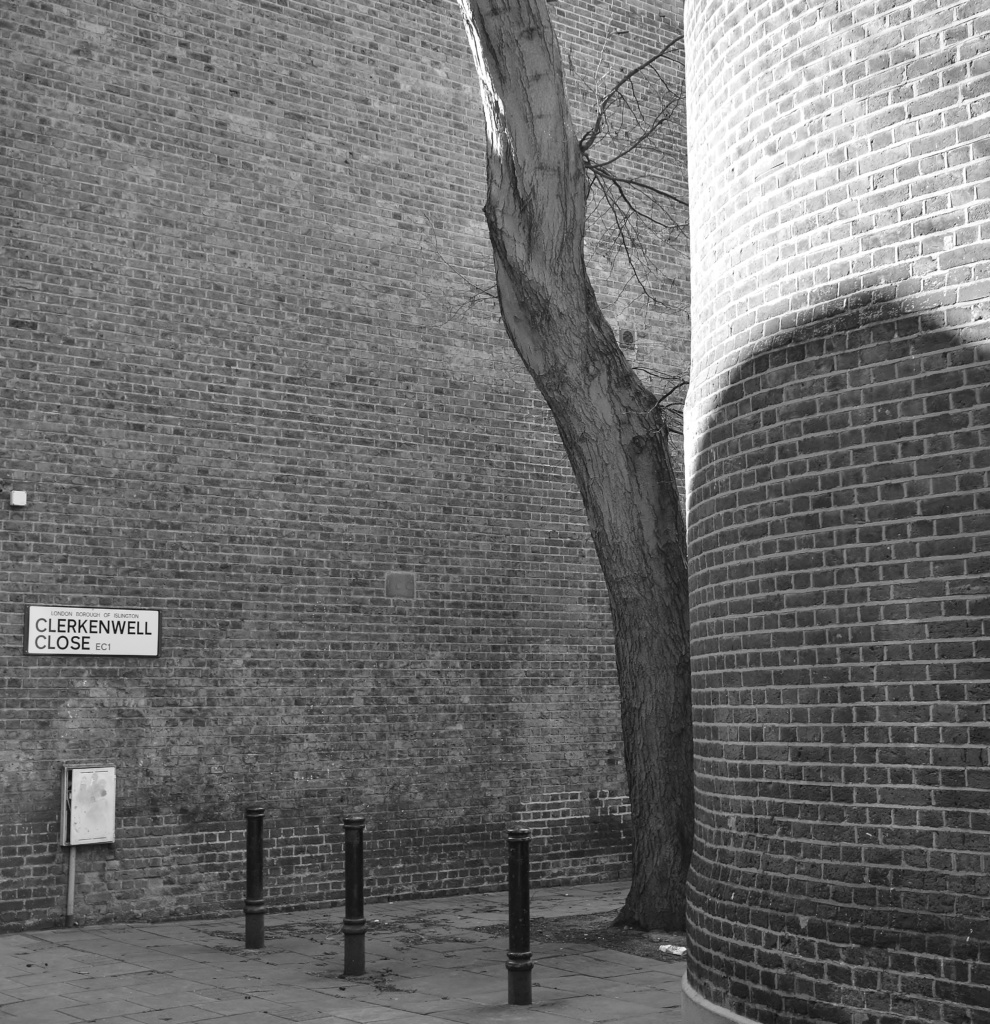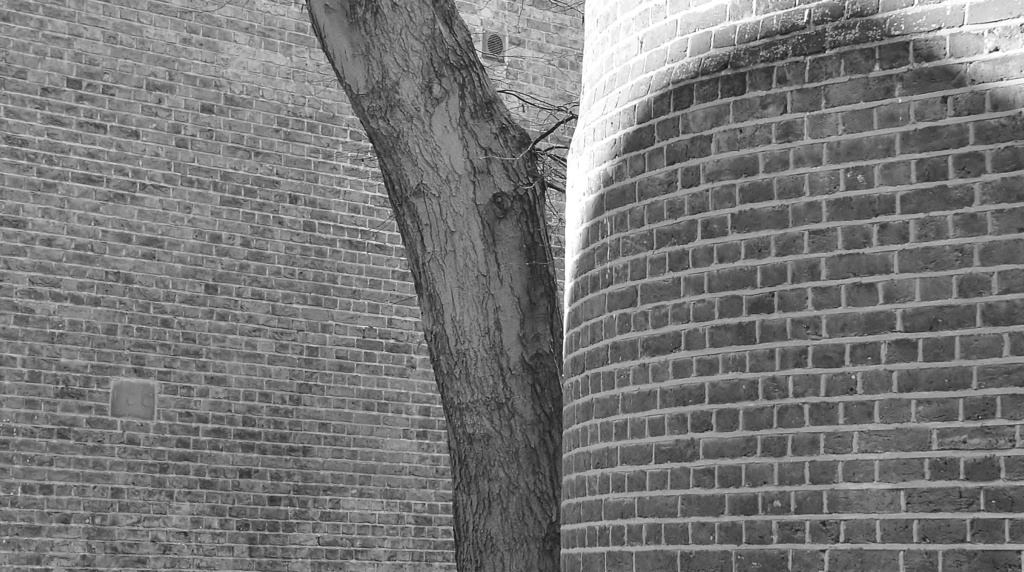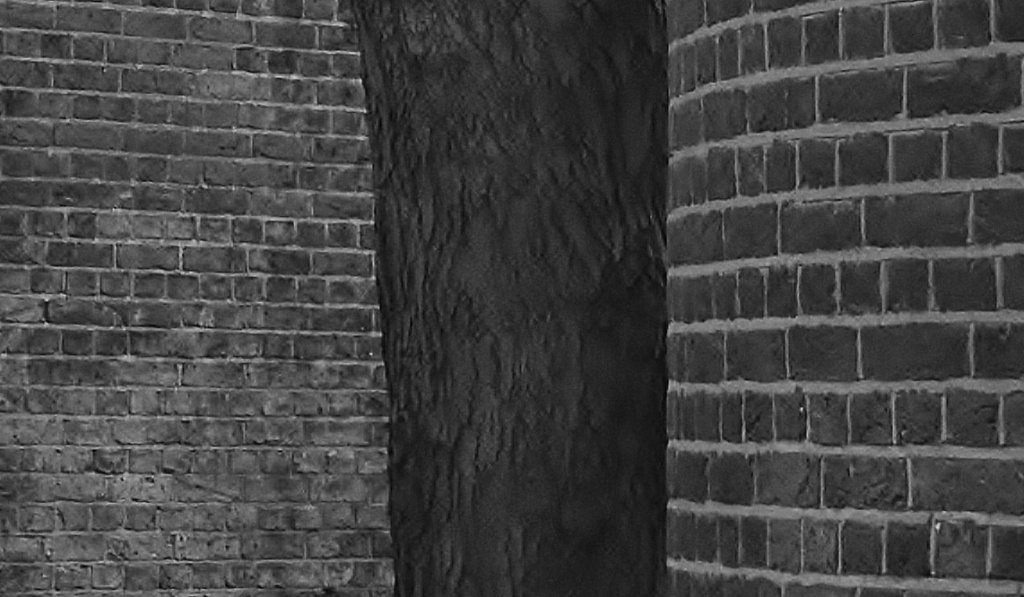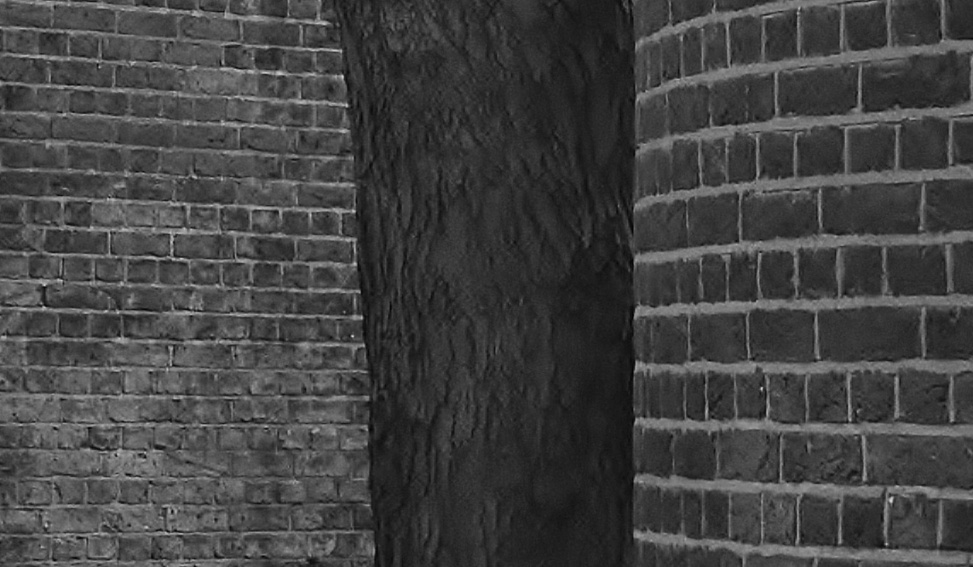It caught my eye as I wandered round Clerkenwell the other day.
A tree poking its head out of Clerkenwell Close to see what is going on in Sans Walk, the strangely named small street that the Close backs on to.
I imagined its life from seed to sapling and beyond as it grew from this place, squeezed up and out from between two brick walls until, at last, towering over the local street life. Tall and skinny and not a little awkward like an adolescent after a growing spurt. And I liked the effect of the bark of the tree against the brickwork of the neighbouring houses, so stopped to take photos.
Why Sans Walk? How did the street get its name. I guessed that “sans” came from the french for without. I knew there had been a prison nearby until it was knocked down and replaced by an imposing red-bricked school (now converted into flats) in the late nineteenth century. Perhaps this street was without the prison wall? Without meaning outside in the way that it is used in the old hymn “There is a green hill far away, without a city wall”. We used to sing that song in Assembly when I was school and I always wondered why the writer drew attention to the fact that hill had not city wall. I wasn’t aware of hills that did have city walls so what was special about a hill without one? It was only when my Dad told me that without could also mean outside of that the penny dropped. Doh!
Anyway, thanks to the internet I found out about the origin of Sans Walk and its less exciting that I’d hoped. Its nothing to do with prisons. This little passage was re-named in 1893 to honour Edward Sans, the oldest vestryman in the Finsbury Vestry. Its previous names included Short’s Buildings and Daggs Yard. That’s London. Everything changes, all of the time.
Our tree does not stand still either. For it the constant cycle of growing and shedding leaves is endless until it dies. On the morning I visited, small buds had appeared at the end of the small branches. Spring is here. Leaves are on their way. Sans Walk will be shaded once more.
